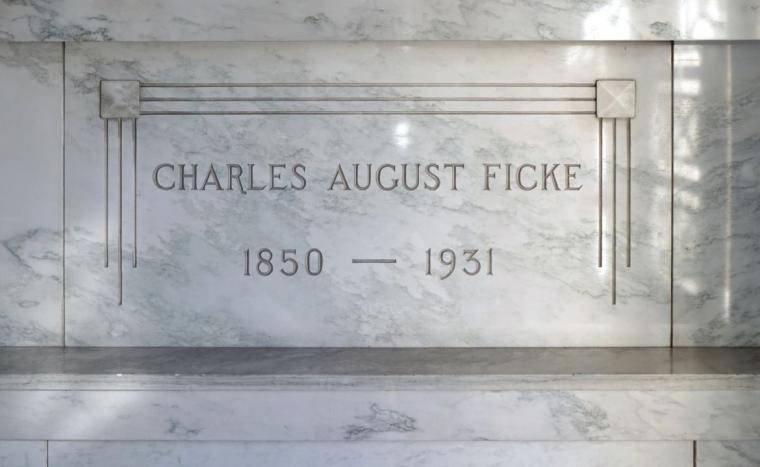
Charles August Ficke drawing by Bruce Walters
“Each generation must pay to succeeding generations the debt it owes to the preceding ones.” – Charles August (C.A.) Ficke
The newly created Davenport Municipal Art Gallery opened its doors to the public in October of 1925. Fourteen thousand people – a fifth of Davenport’s population – visited the gallery on West Fifth Street near Main in its first three months.
Charles August Ficke’s initial gift of 270 traditional European, Asian, and Mexican paintings to the city of Davenport created the momentum and need for a municipal gallery, one of the earliest in America. The artworks in his home were also given to the city after his death and the death of his wife.
These paintings were assessed by the Director of the Chicago Art Institute, Robbery Harsche, when they were first donated. Harsche reported “that he knew of no American private collection in which so many important schools were represented; that the city, through this gift, would acquire a collection, which, in importance, was equal to those of the public galleries of St. Louis, Minneapolis, and Los Angeles.”
Mexican art historian and author Manuel Toussaint later wrote that Ficke’s collection of 17th- and 18th-century Spanish Colonial paintings was the finest collection outside Mexico. (The Iowan, 1975, Julie McDonald).
Previously, Ficke had donated his collection of “Egyptian, Roman, Greek and other antiquities to the Davenport Academy of Science” (1922); and his collection of rare books to the public library (1919). These institutions exist today as the Figge Art Museum, Putnam Museum and Science Center, and Richardson-Sloane Special Collections Center at the Davenport Public Library.
Before giving his collections to the public; before serving as the mayor of Davenport; as the presidents of the Davenport Turner Society and Davenport Academy of Science; and in many other leadership positions, Ficke lived and worked on a family farm near the “hamlet” of Long Grove, Iowa, with his parents and seven siblings.

His family had emigrated from Boizenburg, in the Grand Duchy of Mecklenburg-Schwerin, in 1852, when Ficke was two years old. Following his childhood years on the family farm, he moved to a boarding house in Davenport to attend grammar school at Sixth and Warren. As he recalled in his autobiography, “At the end of the school year, when it appeared that I stood highest in deportment, in my room, Miss Phoebe [Sudlow, the school’s principal] in a short address presented me with a book as a reward.”
In lieu of high school, Ficke worked in a dry-goods store and later as a bank teller before preparing for law school. He would spend Sunday mornings with family friend Attorney H. R. Claussen, discussing what he had read about law the week before. Upon his graduation from law school in Albany, New York, Ficke returned to Davenport. Over the next half-century, he would become one of Davenport's most prominent lawyers, businessmen, and philanthropists.
During these years, he and his wife collected artworks, archaeological artifacts and rare books while traveling throughout the world. Our community is greatly indebted and enriched by his foresight and generosity. The gift of his collection of paintings to the city, alone, is an invaluable legacy.
Yet this 1922 passage in his autobiography Memories of Fourscore Years led me to wonder what his collections could have included: “I searched Paris diligently for paintings, to add to my collection. In the Grand Palais there were two exhibitions of paintings, all of which were for sale. In one of these there were more than two thousand. Among these I saw not a dozen that were conservative enough to interest me. All of the rest were of the extreme modernistic school, which I so strongly detest.“
Charles August Ficke is interred in the Oakdale Garden Memorial mausoleum, along with his wife and family members (Public Mausoleum, SW Tier A, Elevation 2).
Bruce Walters is a Professor Emeritus in Art conferred by Western Illinois University.
This is part of an occasional series on famous (or infamous) people buried in cemeteries in the Quad Cities, and their history that is not so well-known today. If there’s a piece of history buried here that you’d like to learn more about, e-mail the location and a brief description to BD-Walters@wiu.edu.










